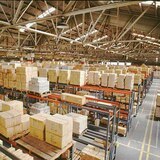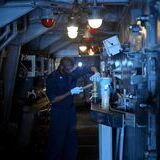RFID tags and their application in production environments
What is an RFID tag and how does an RFID tag work?
RFID (Radio-Frequency Identification) tags are devices that use radio frequency technology for data storage and transmission. The following is required for this to take place:
- RFID antenna: The tag contains an antenna that receives radio frequency signals from the reader and transmits data in response.
- RFID chip: The information of the object to which the tag is attached is stored in a chip integrated in the tag, as a unique identification code.
- RFID reader: These devices act as read and write devices as they allow on the one hand to collect the data transmitted by the RFID antenna, but also to add and feed data to it.
As for the operation, it takes place as follows:
- The label is positioned close to the reader.
- The reader emits a radio frequency.
- The RFID antenna on the tag captures the RF signal.
- The tag converts the signal into an electric current through an integrated circuit and the chip is activated.
- The required information is stored on the chip and is returned through the RFID antenna with another radio frequency signal transmitting the unique code with the information.
- The reader receives this RF signal and interprets it.
- The reader sends the information to a back-end system that can be a database, server, ERP...
Introduction to RFID Tags in Production Environments
RFID technology applied to production processes will allow us to obtain and record data at every step of the production process, which is especially important to achieve excellence in terms of quality and production.
Benefits of RFID Technology in Industry
The advantages of RFID tags over barcodes or two-dimensional tags
Practical Applications in Production Processes
Challenges and Considerations in the Implementation of RFID Tags
Best Practices
The Future of RFID Tags in Production









